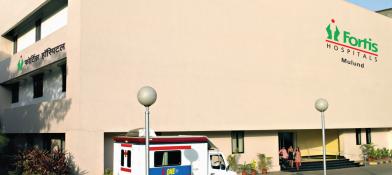Robotic Surgery has made a significant leap in the concept of minimally invasive surgery (Robotic and Laparoscopic Surgery). Minimally invasive surgery means smaller incision, less blood loss, faster recovery and less pain. Unlike conventional laparoscopic surgery, Robotics surgery has advantages of 3d vision, intuitive movements of the surgical instruments, and better precision to achieve the best outcomes across all surgical specialities.
80%
Patient recovery rate
20,000+
Surgeries done
2%
Mortality rate
What is Robotic Surgery?
A Robotic surgery (or more correctly a ‘Robot Assisted Surgery’) is performed by a surgeon using minimally invasive approach in which a robot helps the operating surgeon. During a Robotic surgery, the surgeon directs the robotic arms remotely by using a nearby console. The robotic arms provide the surgeon better control, maneuverability, access, flexibility, range of motion, and accuracy. Miniature robotic instruments are mounted on the Robotic arms and guided through a small skin incision using a powerful 3D camera which provides a magnified detailed view to allow and control precise fine movements.
Robots used in surgery are not programmable and they do not make any decisions/movements on their own – entire decision making, and control is with the expert surgeon who handles the robot. The Robotic system consists of console, the robotic arms and a side-cart. The console is where the surgeon sits and controls the robotic arms.
Prior to handling of a surgical Robot, a doctor must undergo specialised training and certification. Doctors performing robotic surgery at Fortis hospitals are fully trained and certified to handle the robot to its full capability and provide best clinical outcomes.Benefits of Robotic Surgery
1. Reduced pain and discomfort
2. Lesser blood loss
3. Lower risk of infections
4. Shorter length of hospital stays
5. Faster recovery and return to normal lifestyleDifferent types of Surgery
Open surgery
This requires large incisions to view the entire surgery area and perform the procedure using hand-held tools.
Minimally invasive surgery includes:
Traditional laparoscopic surgery:
Surgeons perform laparoscopic surgery using special long-hand held tools while viewing magnified images from the laparoscope (camera) on a video screen. Laparoscopy requires much smaller incision than open surgery. Instruments have restricted range of motion as compared to Robotic arms.
Robotic-assisted surgery:
While the word “robotic” is in the description, a robot doesn’t perform surgery. Your surgeon is the one performing surgery using the Robot and instrumentsHow to decide if Robotics Surgery is right for you?
Patients should talk to their doctor to decide if robotic-assisted surgery is right for them. Only a doctor can determine whether robotic-assisted surgery is appropriate for a patient’s situation. Patients and doctors should review all available information on both non-surgical and surgical options and make an informed decision.
formatting test
Every time your ideas “turn a corner” and head in a different direction, trying hitting the return key and starting a new paragraph.
التخصصات
Related blogs
View allFAQs
What is the Robotic Surgical System?
It is a system with three parts:
Surgeon console is the control centre where your surgeon sits to perform the operation.
Patient cart holds the camera and surgical instruments your surge on controls from the console.
Vision cart manages the communication between all the system components and provides a screen for the care team to view the operation.Why is your surgeon suggesting Robotic Assisted Surgery? What are the benefits?
Surgical Robotic Systems have been widely adopted by surgeons and benefited millions of patients. More than 8.0 million robotic-assisted procedures have taken place worldwide, roughly, every 26 seconds, a patient somewhere in the world gets operated through Robotic Assisted Surgeries.
Just as technology, such as MRI and CT scanners, enhances clinicians’ skills beyond what the human body allows, RAS system extends the capabilities of a surgeon’s eyes and hands. With RAS your surgeon:
• Stays with you in the operating room and uses his or her hands to control a camera and surgical instruments to perform the procedure.
• Views the entire operation in 3-dimensional high definition (3DHD), giving your surgeon a crystal- clear view of the surgical area that is magnified 10 times to what the human eye sees.
• Uses tiny instruments that move like a human hand but with an even greater range of motion. The system’s built-in tremor-filtration technology helps your surgeon to move each instrument with smooth precision.
By providing surgeons with superior visualisation, enhanced dexterity, greater precision and ergonomic comfort, Robotic surgical systems make it possible for skilled surgeons to perform minimally invasive procedures involving complex dissection or reconstruction.Which type of robot is used for robotic surgery?
Fortis Hospitals boasts of highly advanced, latest 4th generation robotic surgery system - the DaVinci Robotic platform
Is robotic surgery more expensive than general surgical procedure?
In general, robotic surgery costs around INR 50K – 70K more than a typical surgical procedure. Since robot is costly, the additional cost is directly related to the robotic instruments used for performing the procedure.
All other associated costs remain same as compared to any traditional, open or laparoscopic surgery. With respect to the incurred cost of robotic surgery, patients get several benefits such as lesser complexities, quicker recovery, minimal incisions, lesser blood loss, and ultimately better quality of life.Is there any difference in anaesthesia used for robotic surgery?
Generally, minimally invasive laparoscopic surgical techniques are employed for typical procedures, but these techniques have their limitations of standard 2D video and rigid instruments that surgeons use. These instruments are incapable of providing high quality video of the affected region that is very much important in case of complex surgeries. Robotic surgery makes it easier for surgeons to carry out complex procedures without making bigger incisions.
The limitations associated with conventional laparoscopic surgical techniques trigger the need for a more advanced minimally invasive surgical technique.How surgeons determine the eligibility of a patient for robotic surgery?
In most cases, surgeons check whether the patient’s case is feasible enough for robotic surgery. If yes, this surgery is recommended with complete details about the procedure, benefits, effects, costs and time. Most patients follow their surgeons’ advice in regard to surgical procedure.
What are the outcomes?
Be sure to talk with your surgeon about the surgical outcomes he or she delivers by using Robotic systems, as every surgeon’s experience is different. For example, ask about:
- Length of hospital stay
- Complication rate
- Chance of switching to an open procedure
- Length of surgery
There are additional outcomes of surgery that you may want to talk with your doctor about. Please ask him or her about all important outcomes of surgery.Does Robotic Surgery have any Risk?
Complications may occur in any surgery, including robotic-assisted surgery. Bleeding, Infection, Injury to tissues and/or organs, Internal scarring may occur. Sometimes these may require an additional procedure or treatment or prolonged hospitalization.
Why Robotic Surgery?
1. Precision in surgery
2. Smaller incisions and less scarring
3. Fewer complications. Such as surgical site infections
4. Less postoperative pain and Less need for pain medication and less need for pain medication
5. Reduced hospital stays and faster healing
6. Quicker return to normal activity and workWhy Robotic Surgery?
1. Precision in surgery
2. Smaller incisions and less scarring
3. Fewer complications. Such as surgical site infections
4. Less postoperative pain and Less need for pain medication and less need for pain medication
5. Reduced hospital stays and faster healing
6. Quicker return to normal activity and workWhy Robotic Surgery?
1. Precision in surgery
2. Smaller incisions and less scarring
3. Fewer complications. Such as surgical site infections
4. Less postoperative pain and Less need for pain medication and less need for pain medication
5. Reduced hospital stays and faster healing
6. Quicker return to normal activity and work




















